Ethiopian Food Dishes: Basic Overview
Common Ingredients
Common Cooking Methods
Courses
Meals
Key Taste
Eating Etiquette
Meal Presentation
Culinary Festivals
Influence and Fusion
Popular Types of Ethiopian Dishes
-
Vegetarian Dishes
Due to religious reasons, Ethiopian cuisine features many vegetarian and vegan dishes, especially stews, salad-like dishes, and sautéd dishes.
Legumes and vegetables are the main ingredients of these dishes, ensuring high nutritional values.
Vegetarian dishes are especially popular during Ethiopian religious occasions.
-
Stews
Ethiopian stews are usually rich, hearty, and heavily seasoned.
These stews are often made with meat or legumes.
Bread like injera is the most popular side dish for stews.
-
Snacks
Snacks in Ethiopia are mainly pastries made from wheat flour.
These snacks come in many sizes and can sometimes have a rich filling.
Many snacks are also breakfast dishes and street food offerings.
Ethiopian dishes are specialties prepared and enjoyed in Ethiopia, a country in East Africa. These dishes were created by the many ethnic groups that call this diverse country home.
Ethiopian dishes combine indigenous cooking traditions with culinary influences from many African dishes, Asian culinary specialties, and Middle Eastern delicacies. Due to religious factors, vegetarianism and veganism are very strong in the country.
Legumes, vegetables, and spices are used extensively in Ethiopian food, with many dishes having a spicy flavor. But meat is also a favorite source of protein; some meat-based dishes have unique preparation methods.
Read to discover the main characteristics, global popularity, and healthy aspects of traditional Ethiopian dishes. Next, I will describe the 17 most popular dishes in the country before covering factors that define Ethiopian cuisine and suggest beverages for pairing with local food.
Scroll down to learn everything about Ethiopian dishes!
17 Fantastic Ethiopian Dishes
Below are the 17 greatest dishes in Ethiopia. To help you navigate these dishes, I’ve arranged them from most to least common.
From national and fusion dishes to traditional specialties and street food delights, you will learn about them all. Don’t forget to use the interactive filter to make your experience smoother.
You can filter according to alphabetical sorting, main ingredients, taste, cooking methods, dish types, courses, and global popularity. Alternatively, search the dishes based on traditional, national, street food, exotic, and, most importantly, vegetarian options.
Injera
- National
- Traditional
Injera is a staple Ethiopian sourdough flatbread with an airy and spongy texture. Its main ingredient is teff flour, a type of high-protein grain that has been cultivated in the country since ancient times.
Injera has a uniquely tangy flavor and is cooked like a pancake on a large circular griddle.
As an essential dish in most Ethiopian meals, injera complements the variety of Ethiopian stews. People tear it into pieces, which they use as a spoon to pick up other food.
Doro Wat
- National
- Traditional
Doro wat is a famous Ethiopian stew made with chicken, boiled eggs, and spices. Berbere, a classic spice blend widely used in Ethiopia, is a must-have ingredient.
This chicken stew is characterized by its thick, fiery sauce, which gets its depth from onions that are slowly cooked down. Locals traditionally serve it with injera on special occasions and holidays, such as Ethiopian Easter.
Interestingly, people often cut the chicken into 12 different parts when making doro wat and give them different names. For example, fereseya would be served to the host, and married people would eat the mequadesha.
Tibs
- Traditional
Tibs is a popular Ethiopian dish that consists of sautéed or grilled meat, usually beef, lamb, or goat. The meat is typically cut into small pieces and cooked with butter, garlic, onions, and sometimes rosemary, giving it a fragrant and savory flavor.
Ethiopians usually serve tibs with awaze, a hot sauce based on berbere. Therefore, tibs can be quite spicy and is often served with vegetables and injera.
Asa tibs is a tasty variant made with marinated and deep-fried fish
Kitfo
- Exotic
- Traditional
Kitfo is a traditional Ethiopian dish made from raw minced beef. It hails from the Gurague region in Central Ethiopia.
To make kitfo, the raw beef is seasoned with mitmita (a spicy chili powder blend) and niter kibbeh (clarified butter infused with herbs and spices). Locals accompany it with injera and a side of ayibe (a mild cheese) or gomen (collard greens).
Kitfo is celebrated for its bold flavors and is normally eaten on special occasions, though many Ethiopian restaurants offer it as a delicacy.
Besides the classic raw version, kitfo is also available in medium-roasted and well-roasted forms.
Shiro
- Traditional
Shiro, also known as shiro wat or tsebhi shiro, is an Ethiopian vegetarian-friendly stew made from ground chickpea or broad bean flour, tomatoes, ginger, garlic, onions, and berbere spice.
Shiro plays an essential role in Eritrean and Ethiopian cuisine. Its texture is smooth and thick, while its taste is rich and spicy.
Ethiopians enjoy shiro on many gatherings and religious occasions when they need to fast, such as Lent or Ramadan. The non-vegan variation usually contains butter and meat called bozena shiro.
Misir Wat
- Traditional
Misir wat is a popular lentil stew in Ethiopia. It consists of red lentils, berbere, onions, garlic, and tomatoes (optional), creating a thick, hearty, and spicy stew.
Misir wat is a vegetarian dish with a comforting flavor and high nutritional profile. Locals typically enjoy it with bread on fasting days, though many daily meals also feature it.
Sambusa
- Street Food
- Traditional
Sambusa, known elsewhere as samosa or sambusak, is an Ethiopian pastry filled with a spiced mixture. It originated in the Middle East in the 10th century and was brought to Ethiopia in the 14th century through trade and immigration.
A typical sambusa consists of two parts: a thin, crispy pastry shell and a filling of finely chopped onions, lentils or ground meat (beef or lamb), and aromatic spices such as berbere or cumin.
Cooking sambusas involves deep-frying the stuffed pastries until golden brown, resulting in a crunchy texture on the outside with a savory, moist filling.
Sambusas are often served during special occasions and religious holidays as a starter, accompanied by various dipping sauces.
Beyaynetu
- Traditional
Beyaynetu is an Ethiopian dish prepared by serving many types of vegetables, curries, and lentil stews on a bed of injera on the same platter. Its name means “assorted” or “various,” referring to its diverse ingredients.
The vegetables used in beyaynetu are often lightly stewed or sautéd and seasoned with fragrant spice blends. The tastes and textures vary across the platter, ranging from spicy and savory to mild and soft.
Beyaynetu is particularly cherished during fasting periods and religious holidays like Lent in the Ethiopian Orthodox Church. Because of its popularity, Ethiopian restaurants always include beyaynetu on their menus.
Fit-fit
- Traditional
Fit-fit, also known as fir-fir or chechebsa, is a traditional Ethiopian breakfast dish known for its spicy, tangy flavor and soft, moist texture.
Fit-fit is made by tearing injera into small pieces and mixing them with sautéed onions, berbere spice, and leftover stew (especially doro wat). These ingredients are simmered until the injera pieces are fully soaked with the flavors.
Many people enjoy fit-fit with extra injera on the side.
Gomen
- Traditional
Gomen is a classic Ethiopian dish consisting of collard greens that are slowly cooked down with onions, garlic, and spices, like ginger and turmeric. The greens become tender and infused with aromatic flavors.
Gomen can be served as a side dish or as part of a larger meal like beyaynetu. Its mild, earthy flavor and soft texture nicely complement spicy and robust dishes in Ethiopian cuisine.
Kik Alicha
- Traditional
Kik alicha is an Ethiopian stew made from split yellow peas. These peas are simmered with onions, garlic, turmeric, and sometimes ginger until they reach a soft, creamy consistency.
This golden stew boasts a mild, subtly sweet, and savory flavor, making it a soothing counterpoint to the more fiery dishes in Ethiopian cuisine.
Tere Siga
- Exotic
- Traditional
Tere siga, which translates to “raw meat,” is an Ethiopian dish made by thinly slicing or cutting fresh, lean beef into bite-sized chunks and serving them with hot sauces or spices, like mitmita or awaze.
Tere siga is especially popular among the country’s highland communities and is often associated with special occasions and social gatherings.
Legend has it that this raw dish originated in the 16th century when Ethiopian soldiers ate uncooked meat to avoid detection by the enemy, as cooking fires could give away their position.
Genfo
- Traditional
Genfo is a traditional Ethiopian porridge that has a thick, dough-like consistency. Its main ingredient is barley, wheat, or sorghum flour, which is mixed with water and cooked until it thickens.
Ethiopians mainly serve genfo with a well of clarified butter and spicy berbere sauce in the center. To make this hole, people often place a finjal (coffee cup) in the middle of the bowl.
Thanks to its hearty and filling nature, genfo is an ideal dish for breakfast or fasting periods, providing a high-energy meal.
Fatira
- Traditional
Fatira is a popular breakfast dish in Ethiopia and Eritrea. It consists of a wheat flour pancake or flatbread base topped with either scrambled eggs or honey.
Sometimes, fatira features both sweet and savory ingredients. Cooked vegetables are a popular addition to many fatira recipes.
The contrast between the crispy edges and the soft, fluffy center makes fatira a beloved choice. Beyond being a popular breakfast item, fatira is also a sought-after snack and street food offering.
Azifa
- Traditional
Azifa is a vegetarian-friendly cold lentil salad in Ethiopian cuisine. It is seasoned with a blend of lime juice, minced onions, green chili peppers, and a mix of spices, including mustard.
Azifa is characterized by its tangy and slightly spicy flavor profile, with a texture that is both creamy and crunchy. Locals typically serve azifa with injera or vegetables during the hot months and fasting periods.
Dabo Kolo
- Street Food
- Traditional
Dabo kolo, literally “corn bread,” is an Ethiopian dish made from a dough of wheat flour, seasoned with berbere or other spices, and then baked or fried until crisp.
Since dabo kolo is small and has a crunchy texture, many people describe it as the Ethiopian pretzel. Flavorwise, dabo kolo is spicy and savory, while versions enriched with honey are pleasantly sweet.
Dabo kolo is a popular snack, finger food, and street food during festive occasions, such as Enkutatash and religious holidays. Locals often wrap it in paper cones.
Himbasha
- Traditional
Himbasha, also known as ambasha, is an Ethiopian sweet bread with a distinctive wheel-like shape and multiple decorative patterns scored on its surface. Think of it as a giant pizza without the toppings.
People flavor himbasha with cardamom, sesame seeds, and raisins or nuts. Himbasha is traditionally served during special occasions such as religious festivals, weddings, and family gatherings.
Now that you have learned about popular dishes in Ethiopia, I will go into a general description of this cuisine.
What Are the Main Features of Ethiopian Cuisine?
Understanding the following six factors will help you make sense of Ethiopian cuisine.
Ethiopia’s location has made it a crossroads for trade between Africa, the Middle East, and Asia, introducing a variety of spices and cooking techniques from these regions to Ethiopian cuisine.
Ethiopia is home to varied landscapes, numerous climate zones, and various ethnic groups. These factors contribute to a diverse range of ingredients used in local cuisine.
The Ethiopian Orthodox Church, with its fasting periods and dietary restrictions, has significantly influenced Ethiopian cuisine.
For example, Wednesdays, Fridays, and the whole Lenten season are obligatory days of fasting, making meat-free dishes very popular.
Due to religious restrictions on the consumption of animal products on fasting days, there is a wide array of vegetarian and vegan dishes in Ethiopian cuisine. Vegetables, lentils, chickpeas, and other legumes are commonly used to prepare flavorful and nutritious dishes.
Many Ethiopian dishes are savory and spicy, especially meat-based ones. The fiery spice blend berbere is used to flavor many local specialties.
Ethiopians mainly eat with the right hand and use bread as a utensil to scoop up food. Meals are often communal, with dishes served on a large platter.
You nearly know everything to learn about Ethiopian dishes; read on for some excellent food and drink pairings in Ethiopia.
What Beverages to Pair With Ethiopian Dishes?
Below are the three most well-known Ethiopian beverages and the best dishes to pair with them.
Coffee
As the birthplace of coffee, Ethiopia holds this beverage in great esteem. Local coffee is often flavored with sugar, salt, or butter and served with snacks or light dishes like himbasha, fatira, and genfo.
Tej
Tej is an Ethiopian honey wine that can range from sweet to dry, making it excellent for accompanying rich and spicy dishes. My recommendations are doro wat, kitfo, and tibs.
Tella
Tella is a traditional Ethiopian beer made from barley, wheat, or maize and has a slightly sour and earthy flavor. Hearty and flavorful dishes like beyaynetu, gomen, and misir wat go well with it.
What do you think about my Ethiopian dish suggestions? Let me know your thoughts in the comment section. Before you go, please share this list of Ethiopian food specialties with your friends!



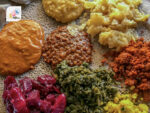
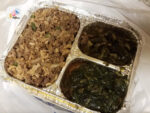
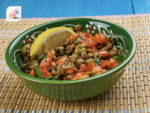
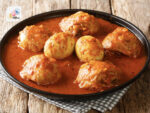
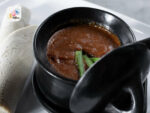
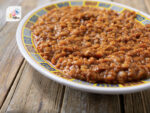



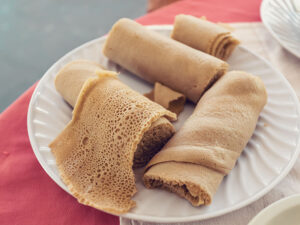
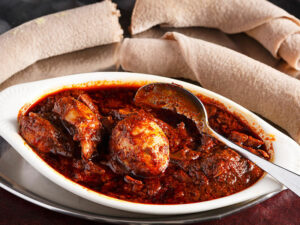
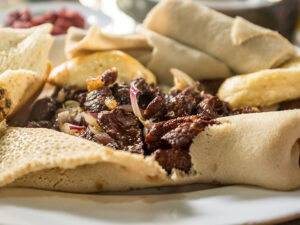
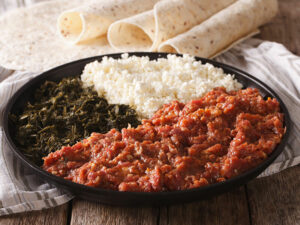
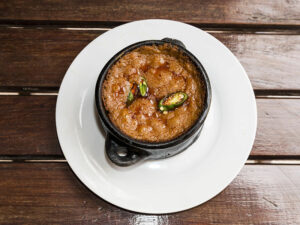
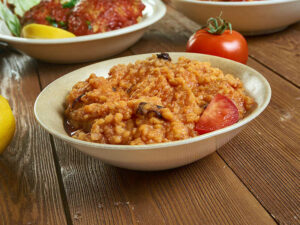

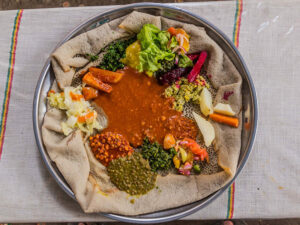
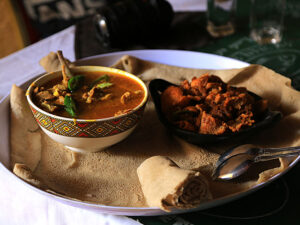
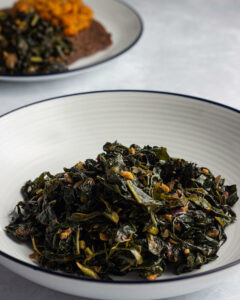
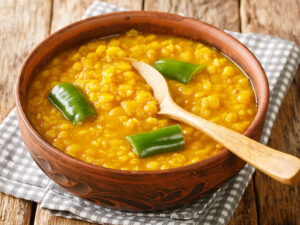
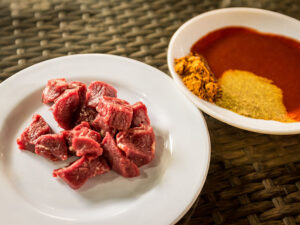
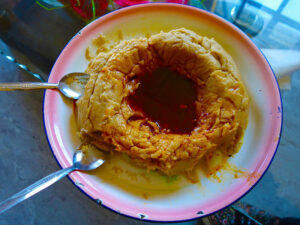
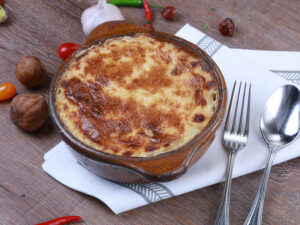
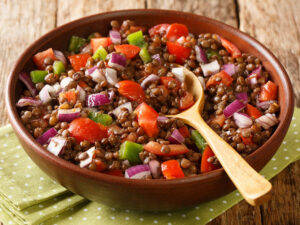
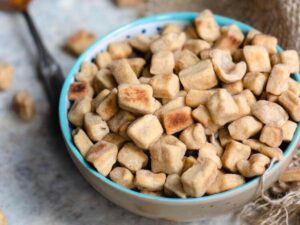
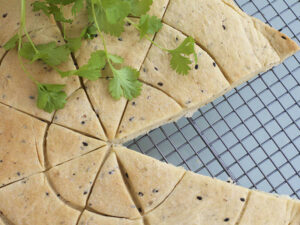
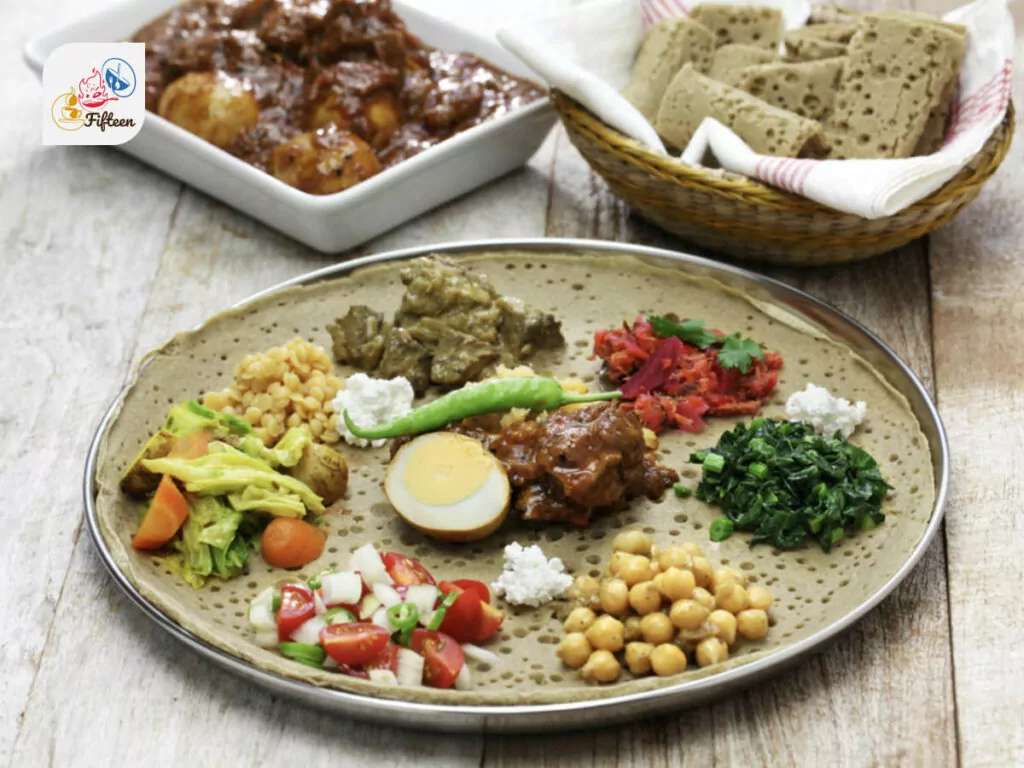


Jamie Scott
Editor in Chief, Senior Content Writer
Expertise
Home Cooking, Meal Planning, Recipe Development, Baking and Pastry, Food Editor, Cooking-video Maker, Western Food Evaluation Expert
Education
Le Cordon Bleu College of Culinary Arts
Local Community College, New York, NY
Jamie Scott is a skilled culinary expert and content creator specializing in Western cuisine. With over 15 years in the culinary field and formal training from Le Cordon Bleu, Paris, Jamie deeply understands how to blend nutrition with delicious flavors. His passion for cooking matches his commitment to making healthy eating accessible and enjoyable.
On Fifteen.net, Jamie brings a fresh perspective to classic dishes and beverages, offering readers insightful recipes, cooking tips, and a fresh view on meal planning that emphasizes taste, health, and simplicity.